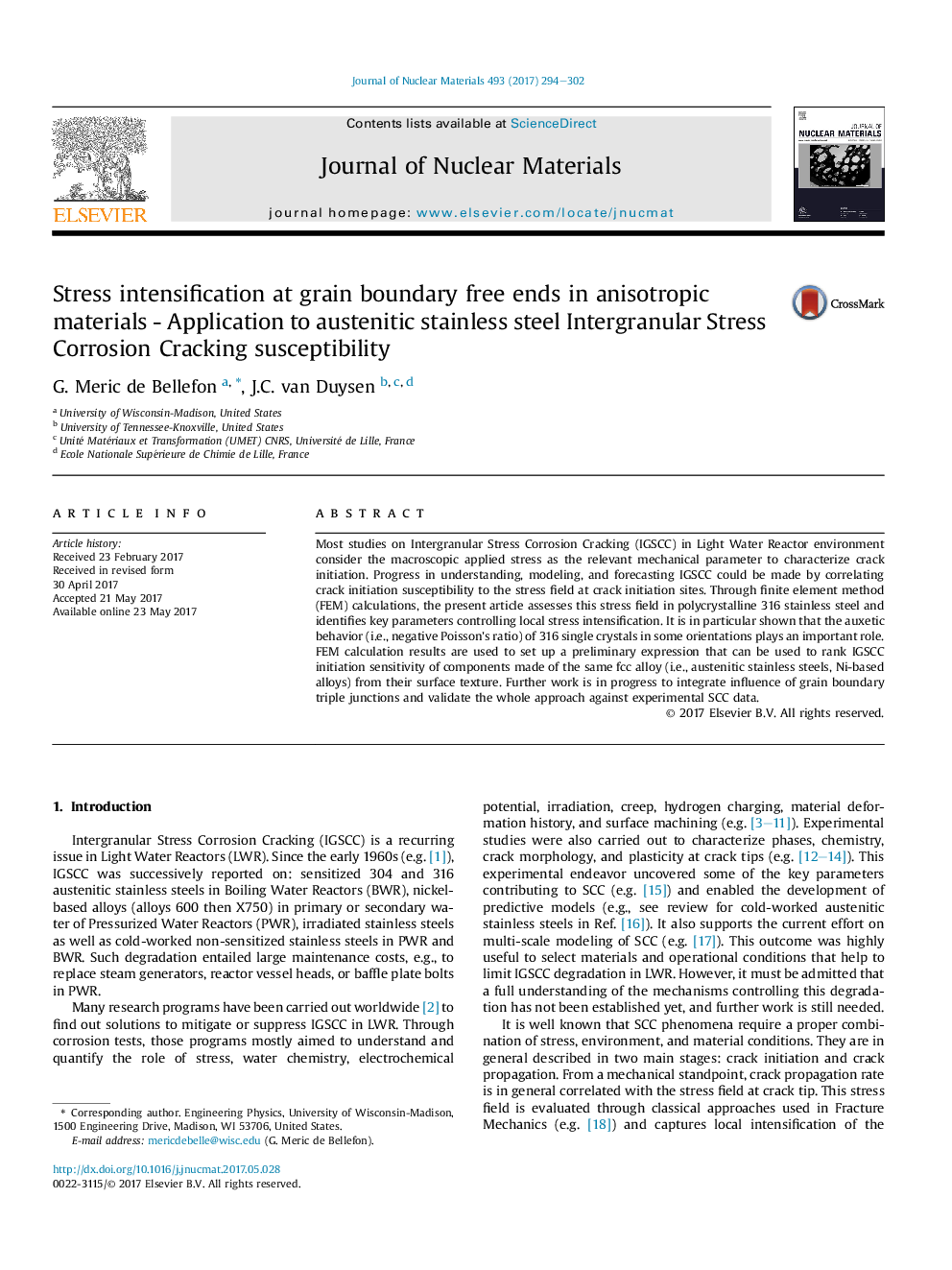| Article ID | Journal | Published Year | Pages | File Type |
|---|---|---|---|---|
| 5453945 | Journal of Nuclear Materials | 2017 | 9 Pages |
Abstract
Most studies on Intergranular Stress Corrosion Cracking (IGSCC) in Light Water Reactor environment consider the macroscopic applied stress as the relevant mechanical parameter to characterize crack initiation. Progress in understanding, modeling, and forecasting IGSCC could be made by correlating crack initiation susceptibility to the stress field at crack initiation sites. Through finite element method (FEM) calculations, the present article assesses this stress field in polycrystalline 316 stainless steel and identifies key parameters controlling local stress intensification. It is in particular shown that the auxetic behavior (i.e., negative Poisson's ratio) of 316 single crystals in some orientations plays an important role. FEM calculation results are used to set up a preliminary expression that can be used to rank IGSCC initiation sensitivity of components made of the same fcc alloy (i.e., austenitic stainless steels, Ni-based alloys) from their surface texture. Further work is in progress to integrate influence of grain boundary triple junctions and validate the whole approach against experimental SCC data.
Related Topics
Physical Sciences and Engineering
Energy
Nuclear Energy and Engineering
Authors
G. Meric de Bellefon, J.C. van Duysen,
